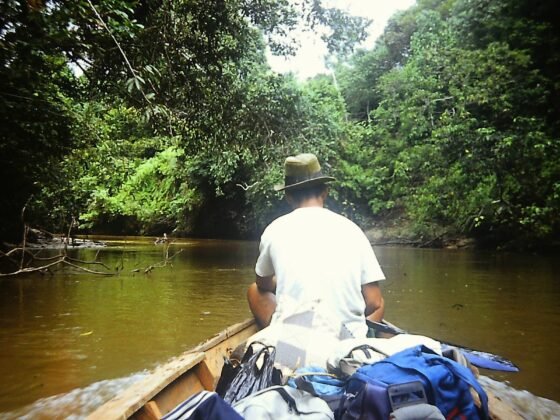In the modern age where the Internet has made the world seem smaller and where a busy lifestyle makes daily lives seem to go faster, it is sometimes necessary to take a break and get away from all the stress.
Stargazing is one activity that allows us to contemplate and relax. The best part is that you can stargaze from the roof of your house without the need for any equipment! Of course, a natural environment will be more relaxing and will allow you to reconnect with nature. If you have dough to spare, why not go to another continent and watch the skies from there? Here are four destinations you should consider.
Brecon Beacons National Park
Brecon Beacons National Park, one of the best stargazing destinations, is a certified International Dark Sky Reserve, which is a type of safeguarded ecological terrain that is excellent for stargazing because of minimal light pollution and territorial isolation. Located on the southern part of Wales with an area of 1344 square kilometers of mostly bare, grassy moorland, the residents have been preserving the great view of the night skies by modifying their artificial lights.
Before dark, you can enjoy outdoor activities such as mountain biking, rock climbing, and canoeing. You can view old churches and castles before going to your campsite. Stargazer’s Retreat is a popular campsite because there is a small observatory that can be used by visitors. Twice a year, there is a gathering of stargazers called Astrocamp which allows newcomers to use various high-end telescopes.
Fuerteventura Island
The next entry on this list is Fuerteventura, the second largest island in Spain’s Canary Islands. Officially declared a biosphere reserve by UNESCO, this island with a land area of 1660 square kilometers is also recognized as a “Starlight Reserve”. The nearest light pollution is about 30 kilometers away on Lanzarote – an island to the north. The low volume of artificial light allows viewers to see the Milky Way on a clear summer night.
Also called “the island of eternal spring” because of the excellent weather, the beaches in the island are excellent, proven by its selection in the 500 European destinations in the Quality Coast International Certification Program of the European Coastal and Marine Union. You can stay in the many resort towns located on the island but at night, you can enjoy various stargazing activities such as guided stargazing sessions and even lessons on astrophotography.
Cairngorms National Park
With a land area of 4530 square kilometers, Cairngorms National Park located in the Scottish Highlands in northeast Scotland is the largest national park in Britain. It has a lot of fine sceneries; from mountains and forest paths to rivers and lochs.
This is a popular holiday destination that provides tourists with outdoor activities like skiing and winter sports during the day. Scotland is said to have the darkest skies of the European continent and once darkness ensues, one of the best places to be in is Glenlivet Estate.
Awarded a Dark Sky status, this location ensures that there are no artificial lights that prevent you from observing the night skies. Since this area is located in the north, even the Aurora Borealis or the Northern Lights may be spotted occasionally.
Tenerife Island
For the last entry, we go back to the Canary Islands. With an area of 2035 square kilometers, Tenerife is the largest of the group. It has a volcanic past as evidenced by Mount Teide, a slumbering volcano that rises 3718 meters above sea level.
An island known for pristine beaches and an active nightlife, this place is very popular among tourists.
Don’t think that the nightlife mostly involves parties as the island is also considered as one of the best places to go stargazing in Europe. Teide National Park is an excellent choice as this UNESCO world heritage site has received “Starlight Tourist Destination” and “Starlight Reserve” awards for low light pollution which results in excellent stargazing conditions.
Stargazing in another continent is certainly romantic but remember that the country you will be visiting may not have English as its primary language. For example, Spanish is the official language in the Canary Islands and although the guides may speak English, going around the islands will be difficult without any basic Spanish words.












